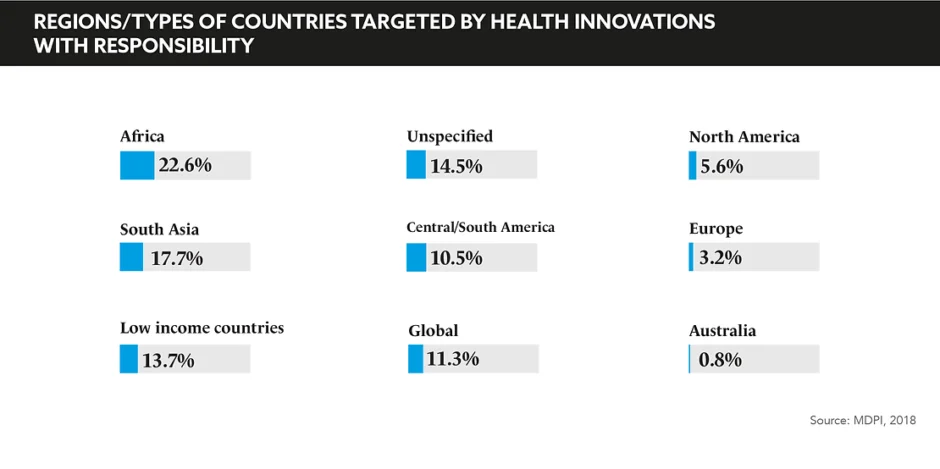Many of the most transformative innovations are taking place in the developing world on an increasingly regular basis. This article explores this phenomenon in healthcare and the key lessons pharma can take when creating their own innovative products
Words by James Coker
“There is no wonder that the flow of innovation is changing. In developing countries there are young, talented people, who have ambitions to address the poverty that they see every single day. They’re not burdened by legacy systems, regulation, or technology costs. Developing countries have now become a live incubation innovation hub”, says Lilian Tse, Program Management Director, Accenture Interactive.
In light of this changing dynamic, that is having a huge impact in the field of health, pharma should be adapting their approach to innovation based on the example set by the developing world.
Innovative healthcare solutions, particularly those involving new technologies, are often thought of as a phenomenon confined primarily to the developed world. A typical image that may be conjured from the word innovation is one of casually clad millennials in a trendy tech company in Silicon Valley, sitting on beanbags and bouncing ideas around over coffee and croissants. Yet, there is a shift taking place, with transformative healthcare solutions increasingly appearing in emerging economies in particular.
A big factor in this is necessity; in countries with only basic infrastructure and where health services are lacking, the requirement for out-of-the-box thinking is enormous. For instance, while modern China is highly developed in many areas, the fact remains that its basic healthcare infrastructure is incapable of properly serving the needs of its vast population. This has opened the floodgates for innovation to flourish.
“China is making those big step changes to be able to innovate. In CAR-T therapy for example, a really tough, personalised medicine, China’s looking at how it can be made faster, cheaper, and more widely available, and they can do that because of that innovation need”, says Claire Gillis, International CEO, WPP Health Practice.
This, coupled with declining technology costs and lower levels of regulation, makes for a potent combination. A great example of this is in Rwanda, where the world’s first drone logistics system has been created. It is capable of independently delivering vital healthcare supplies such as medicines, blood donations, and vaccines to any part of the country within 15 minutes.
Again, necessity was a great motivation in this development; Rwanda is mainly rural, with poor infrastructure and roads, making the provision of vital supplies difficult and time-consuming, often with fatal consequences. This problem has been completely by-passed by the drone system, subsequently revolutionising healthcare across the country, saving many lives that would otherwise have been lost.
When we think of innovation, we run into the problem of finding the solution first rather than truly identifying the problem that we’re solving
So what lessons should pharma be taking from this recent phenomenon to implement into their own strategy? The biggest takeaway is the importance of taking steps to identify real unmet needs prior to creating a solution rather than innovating for innovation’s sake. “When we think of innovation, we run into the problem of finding the solution first rather than truly identifying the problem that we’re solving”, acknowledges Shwen Gwee, Head of Open Innovation, Novartis.
Taking this concept further, solutions such as the drone logistics system aren’t just solving an individual one-off problem, but rather a whole raft. In the Rwandan example, the company who developed and continues to maintain the system, Zipline, worked closely alongside the authorities as well as garnering local knowledge before finalising their plans.
“When Zipline started, the idea was to improve the cold chain around delivering vaccines. But we were told that while vaccines are an issue, the really big problem is blood. And when they gave us that direction, that opened the floodgates to this opportunity”, explains Yaniv Gelnik, Global Business Development Lead, Zipline.
The need to plan innovative solutions with relevant partners is something Gwee and Novartis are acutely aware of. Pharma should increasingly look at their creations as forming part of an overall health solution across an entire eco-system, having the biggest possible impact on the lives of patients.
“Healthcare is so tied across the entire spectrum: the payer, provider, pharma, all the different parts of it, and the patient actually goes across all of them at some point in their journey. If we only solve for our vertical, then we’re just passing the bottleneck down to the next group, so we have to work together across the entire the healthcare space in order to solve it for the patient”, Gwee comments.
The flow of innovation that is occurring in developing countries provides food for thought across the pharma industry. The situation that emerging economies find themselves in has meant innovations are targeted towards solving substantial healthcare problems in conjunction with an entire eco-system.
Pharma needs to take careful note of these experiences; the biggest lesson it should heed is that the most effective innovations come from stepping back and identifying the major unmet needs in the real world setting before tackling these in their own innovation hubs.










